How to Improve Your Online B2B Customer Experience
Accustomed to streamlined, personalised, omnichannel experiences with B2C brands, today’s B2B buyers are demanding the same when doing business online. Join us as we explore nine ways you can optimise your B2B customer experience to meet these rising expectations and drive your digital growth.
Written By
Hannah Smiddy
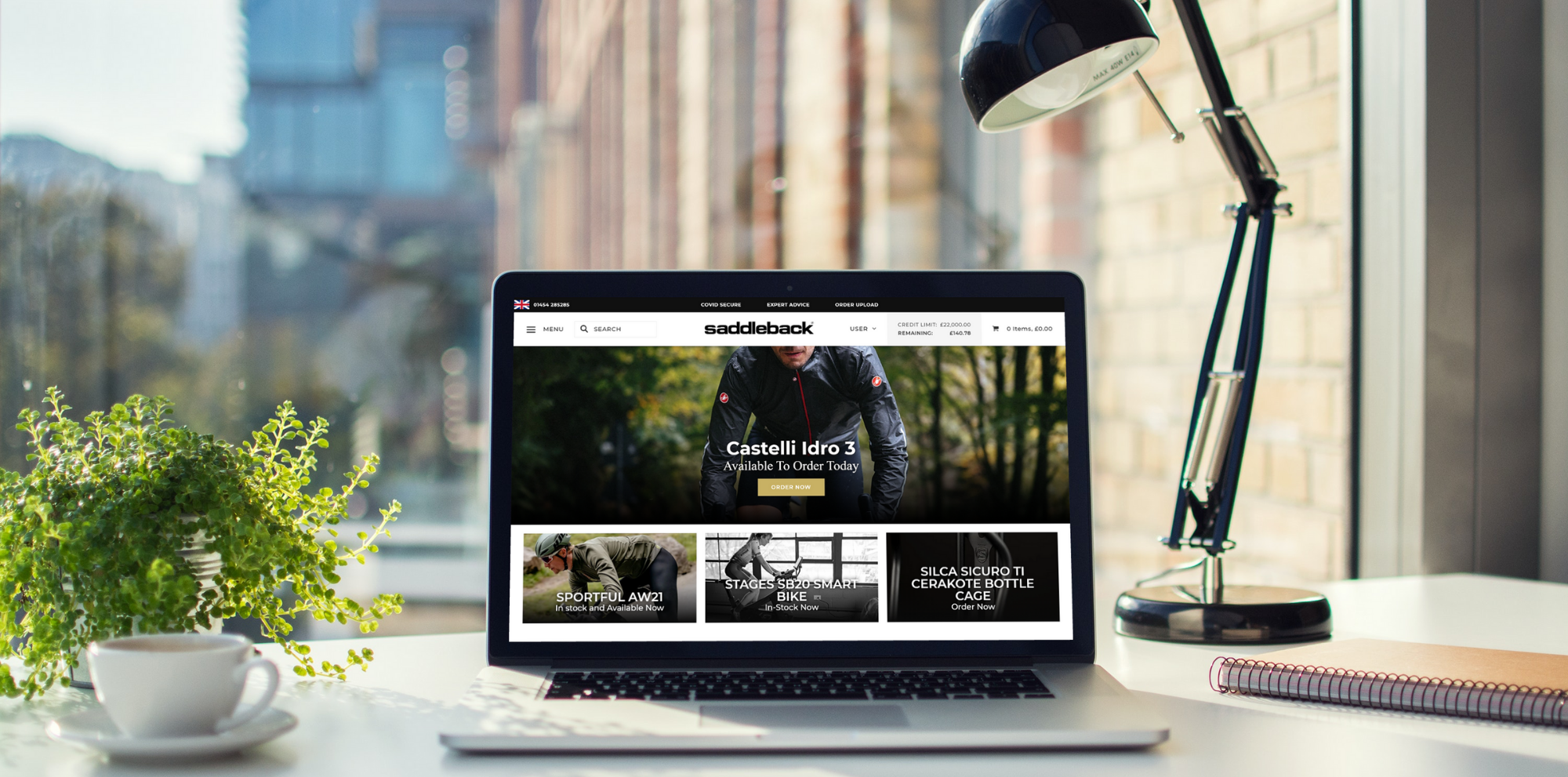
As a retailer, you’ll know that it’s no longer enough to rely on the quality of your products to thrive in your industry. Today’s consumers want more. They want an experience. And they’re not very forgiving if you can’t deliver exactly what it is they’re looking for.
We’re not just talking about business to consumer (B2C) retail here. Customer experience is fast becoming one of the key differentiating factors for business to business (B2B) brands too. In fact, according to recent research, customer experience will surpass product and price as the most critical differentiator for B2B brands in 2022.1
But what does it take to create a B2B customer experience that keeps your buyers coming back for more?
This article will share nine tactics you can use to improve the customer experience on your online B2B store, with tangible examples from some recent B2B projects we’ve worked on at Swanky, including the award-winning B2B site for premium cycling brand Saddleback.
Of course, there are nuances to every business, audience and website, so no two customer experience strategies will be the same – but these are some ideas to kickstart your thinking.
First, though, it’s worth examining what we mean by “B2B customer experience”, and exactly what today’s buyers expect from B2B ecommerce.
What is the B2B customer experience and why is it important?
When we talk about the B2B customer experience, we’re referring to the cumulative experience that B2B buyers have across all of your touchpoints, throughout their entire interaction with your brand, from awareness through to post-purchase.
Get your B2B customer experience right, and you can improve customer satisfaction, increase retention, boost lifetime value, and, ultimately, drive business growth.
Get it wrong, and buyers will simply choose to take their business elsewhere, often spreading the word about their negative experience.
B2B customer expectations
Before we dive into some best practices for B2B customer experience, it’s important to consider what today’s buyers are expecting from online B2B purchasing. After all, these expectations have changed rapidly in recent years, evolving to more closely align with those of B2C ecommerce.
When you consider that 70% of today’s B2B decision makers are millennials (AKA the original digital natives), it’s no surprise that they’re heading online to discover suppliers and products.2 Indeed, two thirds of corporate customers are intentionally going digital for their B2B needs – at every stage of the buying cycle, from research to reorder.3
Not only do buyers have a preference for digital, they want the same sleek, intuitive, personalised experiences offered in their personal online shopping interactions in their professional lives – experiences that make them feel understood and valued.
They expect convenience at every stage of the purchasing journey, with effortless buyer-seller interactions at each touchpoint, no matter the channel. Put simply, they want a hassle-free B2B purchasing experience.
Speed and accessibility are important as well – customers want to be able to find what they’re looking for in as few clicks as possible, access detailed product information on-demand, and place orders quickly and autonomously 24/7.
These aren’t trivial desires for buyers, they’re critical for securing a customer’s purchase and ongoing loyalty. They’re so important in fact, that 90% of buyers would switch suppliers for a better customer experience.4
Yet, research has shown that 50% of ecommerce sites are not fully meeting the expectations of B2B buyers, whilst 94% of B2B buyers have customer experience issues when they buy online.5 With the power in buyers’ hands, online B2B retailers simply can’t afford to deliver a poor customer experience that falls below expectations.
9 tips to optimise customer experience on your B2B ecommerce website
#1 Make navigating your website as easy as possible
Ultimately, you want to make it as easy as possible for your buyers to find and consume the information they need, with an efficient path to purchase. Making their way around your site should be effortless. If not, users will quickly move onto another store in search of a better customer experience.
Here are some B2B website best practice tips when it comes to navigation:
- Start by being clear on your buyers’ intentions – this is essential so that your designers, or the ecommerce agency you’re working with, can create an effective navigation aligned to your customers’ needs.
- Provide easily recognisable product categories, hierarchies and product filters to aid users.
- A mega menu can accommodate a large number of options (grouped by category), whilst revealing deeper-level site pages at a glance. This is ideal for B2B stores with a vast product offering. Swanky client Kent Salon groups their hairbrushes by both type and use in their mega menu, helping to quickly connect buyers with the products they need.
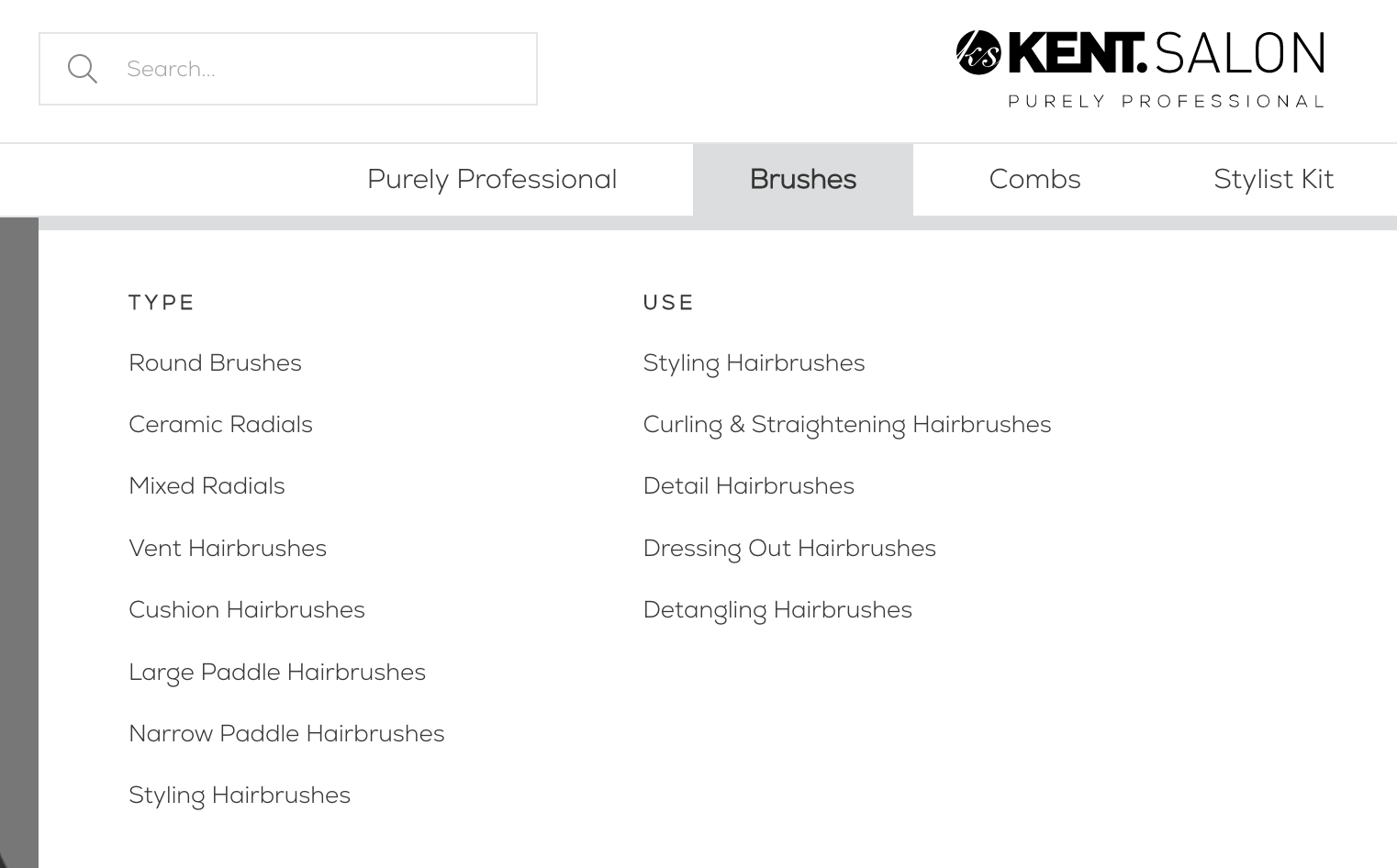
- As with any ecommerce website, your calls to action (CTAs) should be simple, yet eye-catching and easy to find. Why not use sticky CTA buttons to ensure ultimate visibility?
- For access to pages and content that aren’t critical to the buying decision (like careers pages, data privacy notices and forums), consider housing these in the footer.
#2 Offer user-friendly site search
Optimised site search is key for a streamlined customer experience. This is especially true on B2B sites which often have vast product catalogues with large numbers of SKUs and where intent-driven buyers are on the lookout for specific items.
According to research by Gartner, “difficulty finding specific information” was cited as the top source of frustration amongst B2B customers, whilst a separate study found that 71% of B2B buyers will seek out a competitor if finding a product or solution is inconvenient – signalling a need for a seamless on-site search function.6,2
What’s more, leveraging site search has actually been proven to increase conversion rate, revenue per session, session times and page views.7
Demonstrate that you understand a buyer’s desire for ease and simplicity by investing in an intelligent site-search solution. At Swanky, we often recommend Searchanise thanks to its long list of advanced features and economical price tag, or Findify, with powerful AI-driven functionality for mid to enterprise-level stores with a large product database.
Here are a few things to keep in mind when choosing the right search tool and putting it to use on your website:
Autocomplete
By leveraging autocomplete, you can pre-empt a user’s search query and speed up the path to purchase – one of the keys to a good customer experience, as well as high conversion rates.
You can take this a step further too, tailoring search suggestions based on a user’s recent on-site activity and purchasing history.
Synonyms, acronyms and abbreviations
Configure your search function to handle things like synonyms, acronyms and abbreviations. This is especially important in the jargon-packed world of B2B ecommerce, plus, it reduces friction for busy buyers who want as seamless a search experience as possible. Not delivering this risks frustrating customers and losing them to a competitor’s website.
Error tolerance
Ensure your site search is built to handle misspelt words too – not having an error tolerance is a surefire way to annoy your buyers and end their website visit prematurely.
More than just products
As well as presenting search results for products, try serving up results of relevant categories, pages and posts (such FAQs and blog articles), just like Kent Salon in the example below.
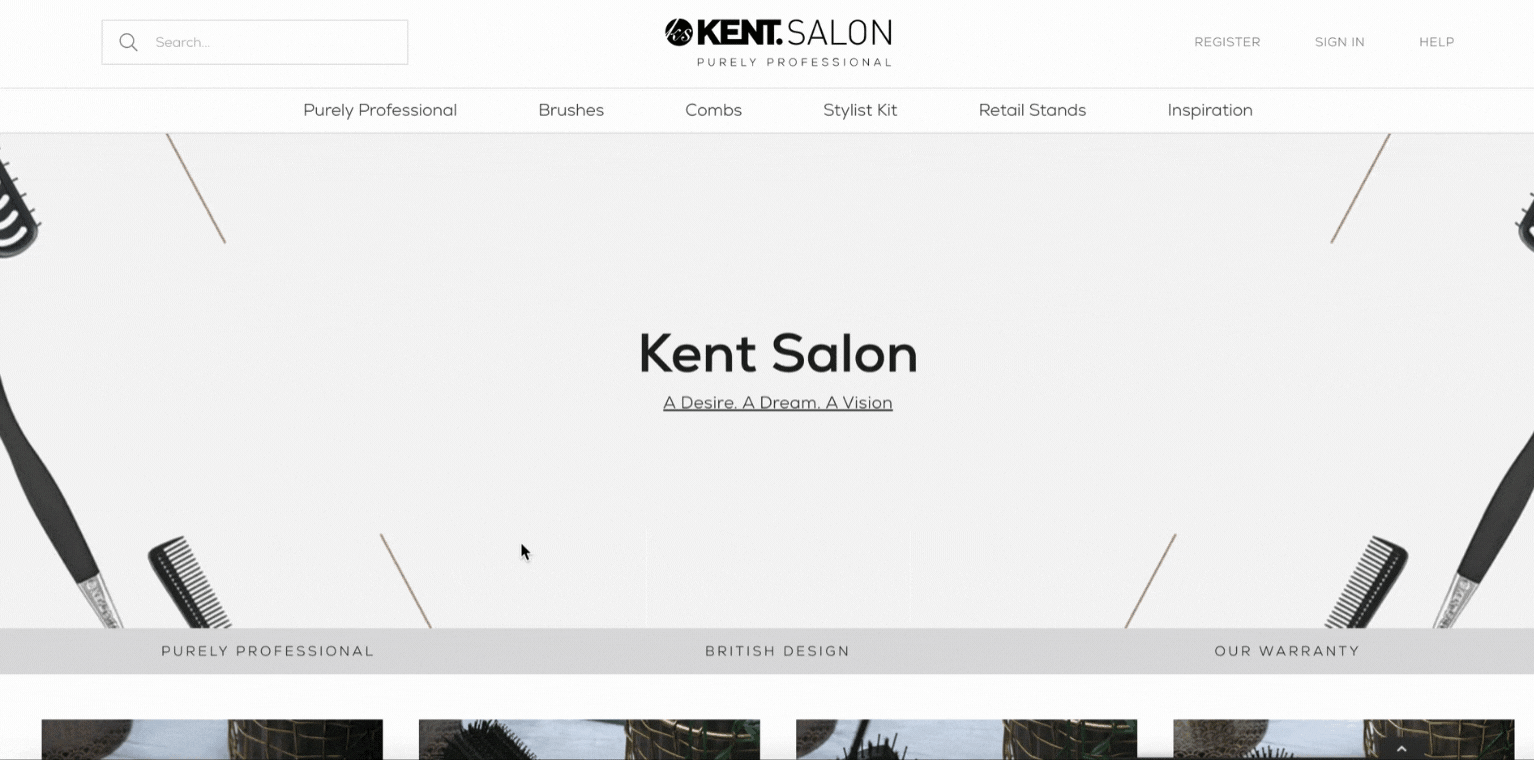
This combination of search results is a great way to help users find exactly what they’re looking for. By covering “all bases” so to speak, you’re streamlining their journey on your website and ultimately improving the B2B customer experience.
Optimised zero-results pages
No results to return for a user’s search query? Rather than presenting buyers with an uninspiring “we can’t find anything” or “no results found” page, elevate your B2B ecommerce experience by presenting similar, relevant items for a user to explore.
Optimising your zero-results pages like this will keep customers on your site, rather than seeking out other suppliers.
Search data analysis
Finally, we’d recommend regularly reviewing your on-site search data and dissecting it for opportunities.
For instance, by analysing your “zero results found” queries, you can identify products that buyers are frequently looking for but that you don’t stock, perhaps signalling an avenue of expansion for your product catalogue.
Moreover, these zero search results can help you identify synonyms or misspellings to help fine tune your search function.
We’ve got some more best practices for ecommerce site search here.
#3 Provide rich product content
B2B buyers are looking to be educated and inspired when sourcing products online. Your website should leverage copy, photography and video to immerse them in the story of your brand and convince them of the benefits of a business relationship with you.
Here are some ways you can do just that on your B2B ecommerce website.
Use high-quality ecommerce photographs
The photographs you use on your B2B ecommerce store can make or break a customer’s experience with you. Poor-quality images can instantly trigger caution and distrust amongst buyers, whereas sleek, professional photographs immediately frame your brand as a credible business and put customers at ease.
These are some of the criteria for B2B website photos that help drive conversions:
- Keep them clean and uncluttered – this will help increase the perceived value of your products (and your brand as a whole).
- Display a variety of angles to showcase your products in their entirety, including any USPs.
- Allow zoom functionality to provide a more detailed look at products and help buyers appreciate their value.
- Leverage lifestyle images as well as product photography.
- Keep things professional with a consistently-styled image library (although don’t be afraid to get creative – there’s still plenty of room for this in the world of B2B!).
Leverage product videos across your channels
Whether it’s capturing attention on your social channels, or providing detail on a product page, a product video can be an effective way to enhance a buyer’s experience and push them through the sales funnel. How? By communicating important product information, indicating quality and boosting customer confidence.
Keep in mind these tips for optimising your product videos:
- Tell the story of what a product does and the value it can bring to end consumers.
- Showcase the most important features of a product by zooming in on details and using shots from different perspectives.
- Keep it short to maintain attention and engagement.
- Don’t be afraid to inject your brand’s personality and keep it human – after all, this is becoming increasingly important within B2B ecommerce.
Embrace product visualisation tech
Take your product content one step further by embracing emerging technologies like augmented reality (AR) on your B2B ecommerce website.
AR is an immersive 3D technology that superimposes computer-generated images onto a real-life view, allowing you to change your perception of the physical environment around you. Long seen as a somewhat novel and abstract concept, AR is now viewed as a bridge between physical and digital commerce – a powerful ingredient in crafting a compelling customer experience that converts.
As an online B2B retailer, you can leverage AR to keep users on your site for longer and foster deeper brand-buyer connections – increasing the chance of them following through with a purchase.
Plus, just like photos and videos help to boost buyer confidence, AR helps remove the guesswork of online purchasing by helping users understand exactly what they’re buying. They can assess things like size, colour and finish, making it easier to come to a purchasing decision.
As well as contributing to an elevated customer experience, leveraging AR on your site can increase conversion rate, revenue and retention, not to mention provide valuable data about how your customers interact with your products.
Find out more about how AR can be used in the ecommerce industry here.
Curate detailed product descriptions
Listing a product name with a short, snappy description won’t be enough to satisfy B2B buyers in their quest for rich product information. Rather, they want to know details – details that will enable them to make an informed purchase decision.
Use this checklist when crafting your B2B product descriptions:
- Clearly list essential product details and specifications, such as colour, dimensions, materials, ingredients, and any variations available.
- Anticipate buyers’ questions about when, where and how a product is best used.
- Highlight the benefits – think about the problem your product solves for consumers.
- Include special qualities and certifications that make your product stand out in the market.
- Keep sentences short and engaging, avoiding jargon.
#4 Enable “self-service”
B2B customers want the ability to access product information and complete transactions whenever they want, “self-service” style (without having to rely on an email response from their account manager or the customer service team). In fact, when it comes to reordering, 86% of today’s B2B buyers prefer using self-service tools, rather than talking to a sales representative.2
On-site knowledge base
A simple way to enable quick, easy and autonomous access to information is with a knowledge base – a section of your website that houses all the support documentation for your customers.
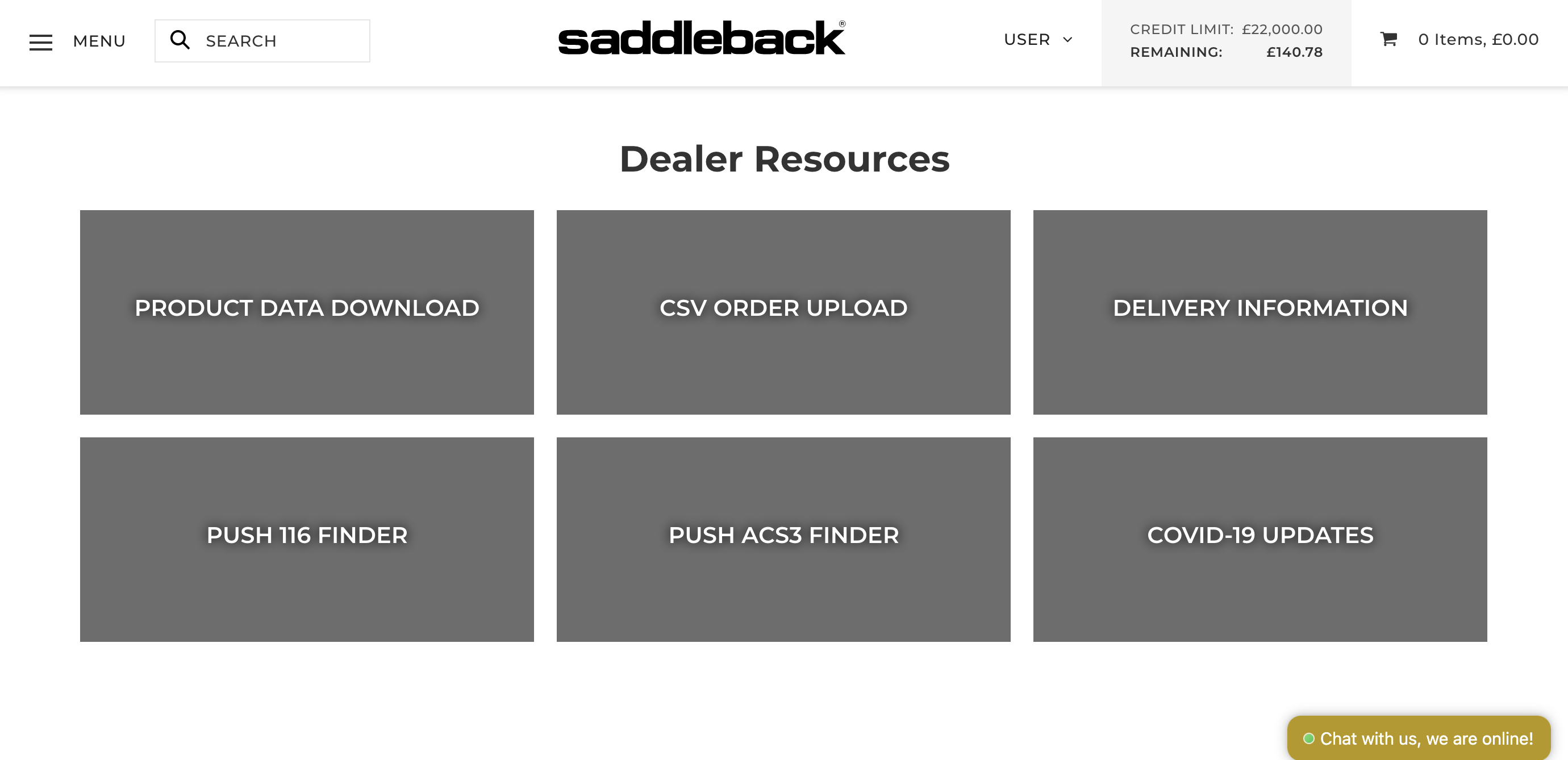
Having a clearly-signposted, easy-to-navigate resource like this helps buyers find answers to their questions quickly and independently, without having to call your support team, which is a must-have when it comes to customer experience.
Plus, this is an effective tactic to help reduce incoming queries, freeing up your customer service team.
Consider providing links to resources directly on your product pages too, allowing buyers to find out more about a particular product in just a few clicks. Enabling customers to download things like product images, guides and material lists whenever they want, and with ease, satisfies their need for autonomy.
Chatbots
Another way to enable customer self-service is by leveraging an automated chatbot on your online store. These can connect with users any time they want, instantly providing them with the answers they need to frequently asked questions and directing them to relevant pages.
For example, users on the website of Stomp Stickers (a Swanky client selling both B2C and B2B) can get speedy answers to their questions thanks to “Stanley” the chatbot:
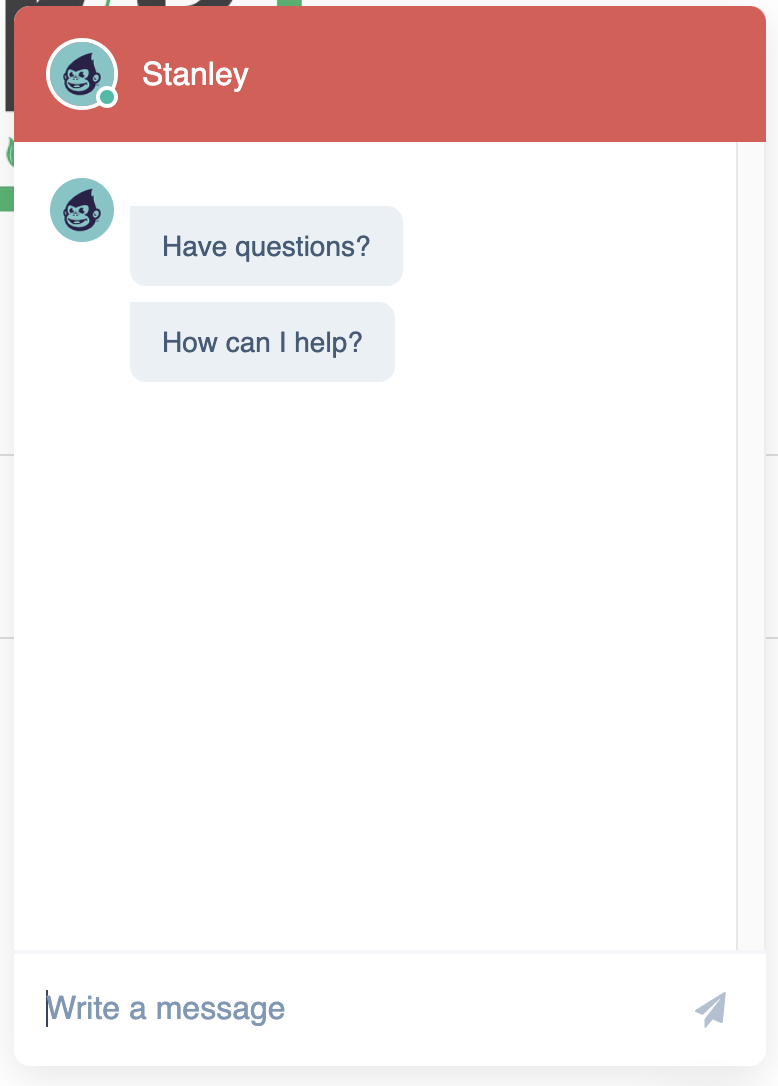
Downloadable product data – an example
To see customer self-service in action, look no further than the B2B ecommerce website of performance cycling brand, and Swanky client, Saddleback.
In order to make detailed product information more accessible for stockists, our Shopify Plus development experts configured the site so that users can easily download a list of the product variants available to them as a gold, silver or bronze-tier stockist, self-serve style. The downloadable files include sought-after information such as product title, price, quantity available, and date of next restock.
Not only does this solution provide easy access to key decision-making information, it also plays into customers’ desire for a tailored, relevant experience (more personalisation tactics up next!).
#5 Personalise the online B2B experience
From the product catalogue they’re presented with, to the pricing options they see, your B2B buyers are increasingly seeking a personalised, more human online experience. They’re looking for suppliers who can demonstrate an understanding of their unique needs and provide a tailored experience based on these.
What’s more, not only do customers thrive on a tailored buying process, B2B companies do too, with 80% of retailers stating that personalising their ecommerce site makes them more effective in reaching their objectives.8
So, how can you deliver personalisation across your B2B ecommerce website?
Custom pricing
It’s not unusual for B2B retailers to offer different prices to different buyers. Crucially, customers will want to see accurate prices right from the get-go on your online store – don’t make them wait until they get to checkout, where they might get a nasty surprise.
Saddleback’s B2B website leverages custom pricing rules to deliver a personalised experience to buyers, as Swanky’s Lead Developer, James Kam-Radcliffe, explains:
“The store uses Shopify Plus’ tagging functionality to display custom pricing for bronze, silver and gold stockists, meaning that from the moment a buyer logs into the portal, they’re presented with relevant discounts and pricing, reflective of the tier they’ve been allocated to.”
Tailored product recommendations
Similarly to D2C shoppers, B2B buyers want to see suggestions for other products that might interest them – especially suggestions personalised to their buying interests and purchase history. You can display these tailored suggestions at numerous touch points across your website, including the homepage, search results pages, product pages and the cart.
Curating recommendations creates a positive buying experience and demonstrates to your customers that you value their individual needs. Plus, it can also do wonders for average order value and revenue.
Personalised content
Consider presenting tailored content, like banners and pop-ups, based on a buyer’s order history to direct them straight to the products they’ll likely want to reorder. This speeds up their route to the checkout and demonstrates that you’ve understood their needs as a buyer.
#6 Allow for streamlined high-volume ordering
B2B buying is often characterised by high-volume ordering. Your aim? To make this as simple and seamless as possible for buyers.
We did just this for Saddleback, removing the need for users to have to manually navigate to individual product pages, check availability and add items to their cart one-by-one. Instead, a high-volume ordering process provides a streamlined route-to-purchase.
“First, stockists upload a CSV file containing a list of the products they require,” explains James.
“Next, they’re directed to a ‘holding area’ on the site, which displays the items they’ve requested along with their stock status. A useful add-to-cart option then allows buyers to quickly progress any available items to their basket in one go.”
Hassle-free, high-volume ordering like this is important for maintaining buyer satisfaction, encouraging repeat purchases and fostering profitable long-term relationships.
#7 Showcase testimonials
Unlike B2C consumers who are usually buying products for themselves to use on an individual basis, B2B buyers have the added pressure of making important purchasing decisions on behalf of their company, about a high-volume, high-ticket order (of products that other people will eventually use).
Therefore, they need to have the utmost confidence in your products and your brand before heading to the checkout.
One way you can provide peace of mind for buyers is by showcasing testimonials and case studies. If buyers can see that others in their position are enjoying the benefits of a successful relationship with your brand, they’re more likely to place their trust in you and progress with their own order.
Providing this insight for your buyers is a key piece of the customer experience puzzle, not to mention an effective way of adding credibility to your brand.
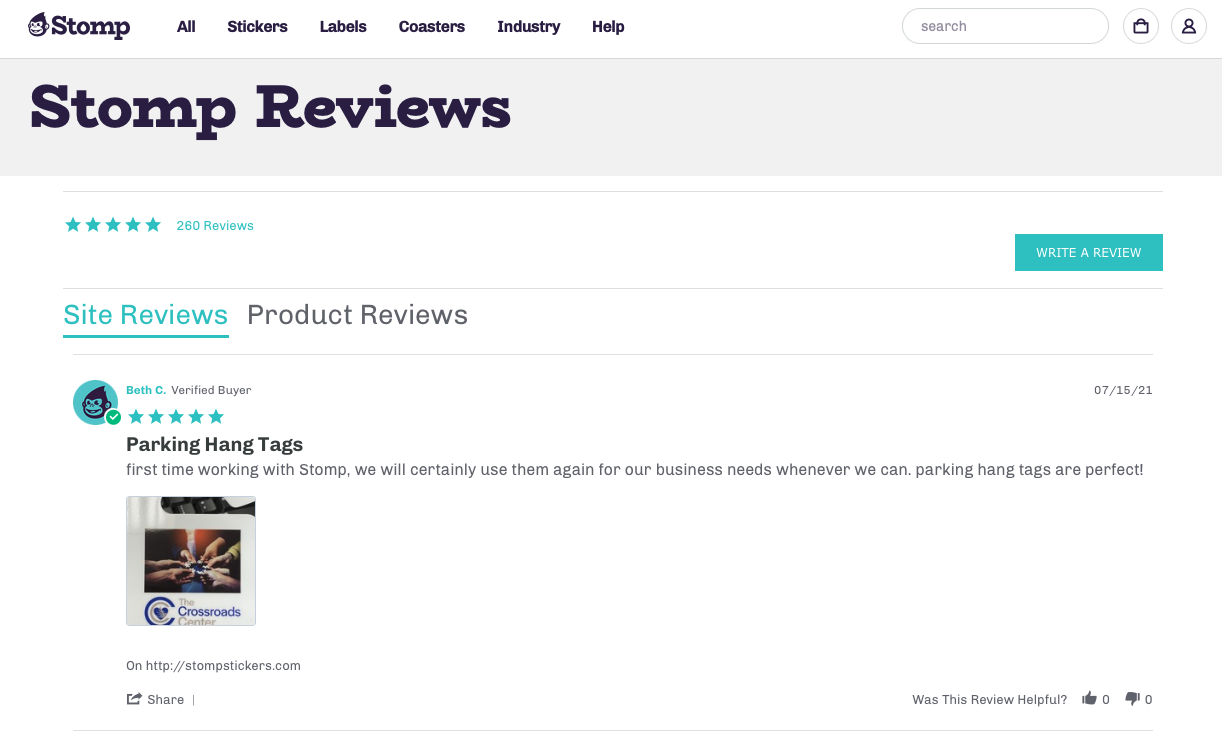
It’s also worth noting that client testimonials are great for supplementing your product descriptions and providing B2B buyers with the rich product content they’re looking for. Remember that ecommerce customers are unable to see and touch your products before committing to a purchase, but testimonials can work together with your descriptions, photos and videos to fill in the gaps and help paint a clear picture of your products and their benefits.
#8 Deploy an omnichannel strategy
Omnichannel is the new buying norm in B2B, as shown in recent research by McKinsey.9
When we talk about creating an omnichannel B2B customer experience, we mean taking a seamless, holistic approach that gives buyers the opportunity to connect with your business in the way that suits them (whether it be through live chat on your website, by picking up the phone, sending an email, messaging you on social media, or visiting a sales rep in-person).
You must make it easy for your buyers to find the information they seek via their preferred channels and devices, and interact with them wherever they are, rather than forcing them to interact with your brand in a way they’re not familiar or comfortable with.
Curating an omnichannel customer experience first relies on understanding your customers and how they behave. What touch points do they have with your business and how do they prefer to communicate at each one? Look to your customer data to gauge your audience and their patterns.
Consistency is important too, with a recent study finding that over 98% of B2B buyers look for a cohesive purchasing experience across all channels.2 Ensure your branding and marketing is unified and speaking to your target audience, as this is an important part of growing customer loyalty and encouraging recommendations.
#9 Leverage customer data
Just as in B2C ecommerce, it goes without saying that your actions should be driven by data as an online B2B retailer.
Regular, real-time analysis of customer data will provide insights into the different types of buyers you have and their behaviours throughout the buying cycle, enabling you to establish a smarter, more customer-centric strategy for improving customer experience.
We’ve got a dedicated blog post on the importance of data in ecommerce, complete with insights from Swanky’s Data and Analytics Manager Tom Cox, here.
Wrapping up
To compete and succeed in B2B ecommerce, you need to deliver a customer experience that ticks all your buyers’ boxes. With the tips we’ve shared in this article, you can start to optimise your B2B customer experience and build strong and profitable trade relationships that help accelerate your business growth.
Swanky’s B2B ecommerce services
Whether you’re a traditional B2B retailer looking to make the move to online sales, or an established B2B ecommerce brand looking to accelerate your digital growth, we have the expertise and experience to help.
We’ve been crafting beautifully designed, technically advanced ecommerce stores for over a decade now. We’re not afraid to push the boundaries of Shopify Plus, often building on its already extensive capabilities to create custom user experiences and functionality.
Discussing the innovative nature of the Saddleback project in particular, James Kam-Radcliffe, Lead Developer at Swanky, said:
“It’s the most technical project I’ve been involved with in terms of the functionality that the client needed. It’s been a real challenge, but also one of the most satisfying end results. It’s always enjoyable creating solutions that go beyond the realms of what Shopify offers ‘out-of-the-box’”.
It’s this innovative use of the Shopify platform, as well as our extensive understanding of B2B ecommerce and all its intricacies, that perfectly positions us to deliver award-winning online B2B experiences that supercharge sales. In the case of Saddleback, just one month after their new UK B2B ecommerce website launched, they saw sales grow by 881%!
To find out how we can unlock your ecommerce potential like this, talk to us today.
And, to find out more about the different routes into B2B ecommerce and why it’s an important channel to embrace in the modern retail climate, check out this blog post.
For reference
[1] https://walkerinfo.com/cxleader/customers-2020-a-progress-report/[2] https://oroinc.com/b2b-ecommerce/blog/infographic-b2b-ecommerce-benefits
[3] https://www.mckinsey.com/business-functions/marketing-and-sales/our-insights/busting-the-five-biggest-b2b-e-commerce-myths
[4] https://www.avionos.com/resources/2021-b2b-buyer-report/
[5] https://www.sana-commerce.com/b2b-buyer-report-2022/
[6] https://blogs.gartner.com/hank-barnes/2019/03/05/frustrating-things-b2b-buyers/
[7] https://www.optimizely.com/insights/blog/improving-b2b-ecommerce-search/
[8] https://neilpatel.com/blog/b2b-content-personalization/
[9] https://www.mckinsey.com/business-functions/marketing-and-sales/our-insights/omnichannel-in-b2b-sales-the-new-normal-in-a-year-that-has-been-anything-but

